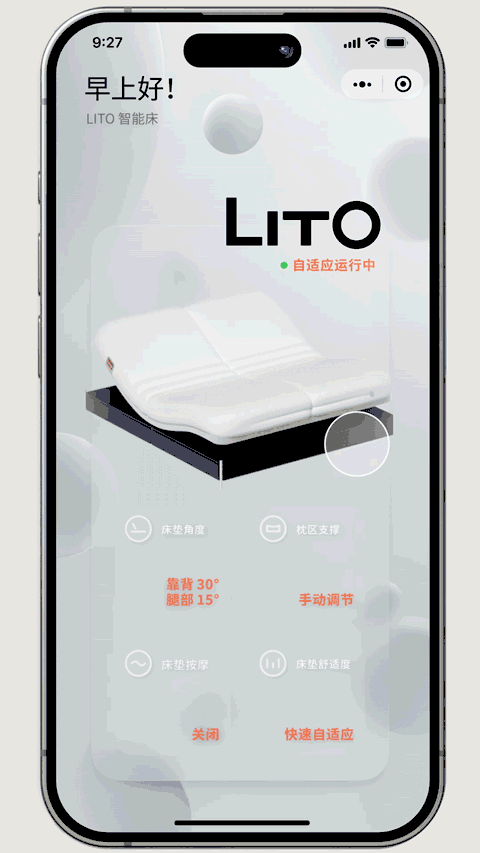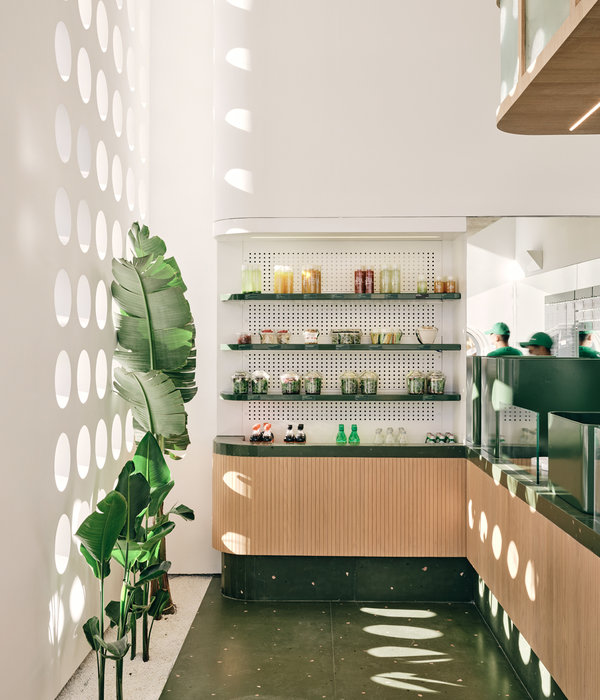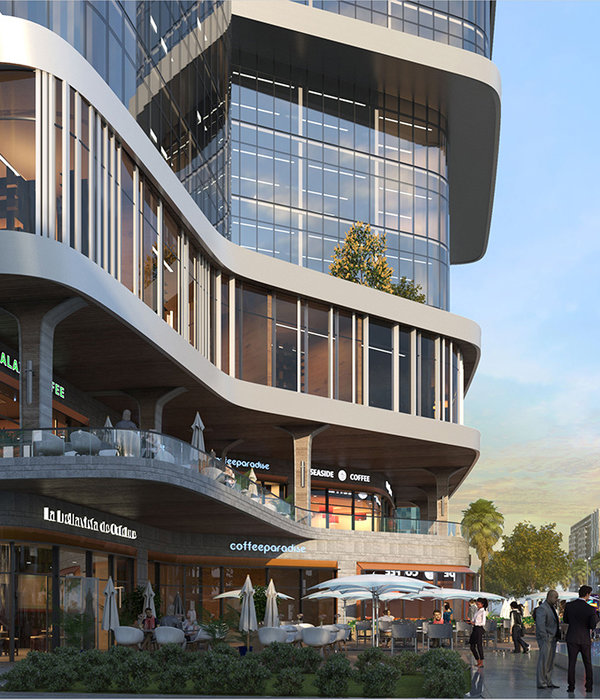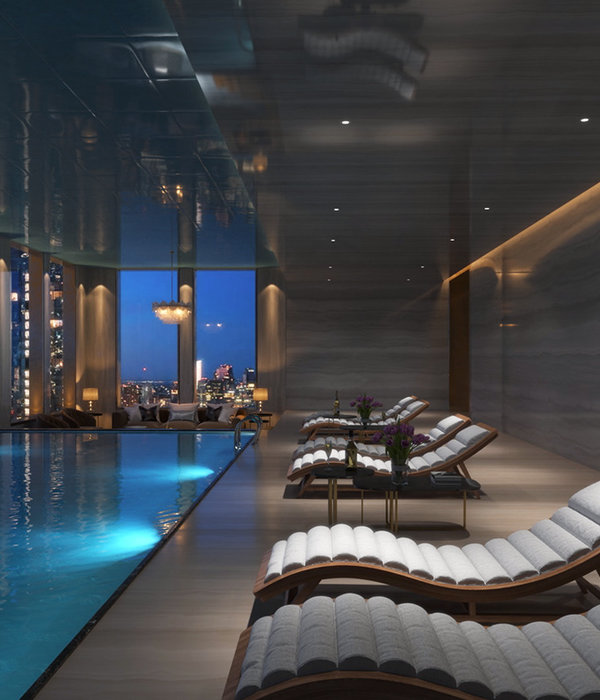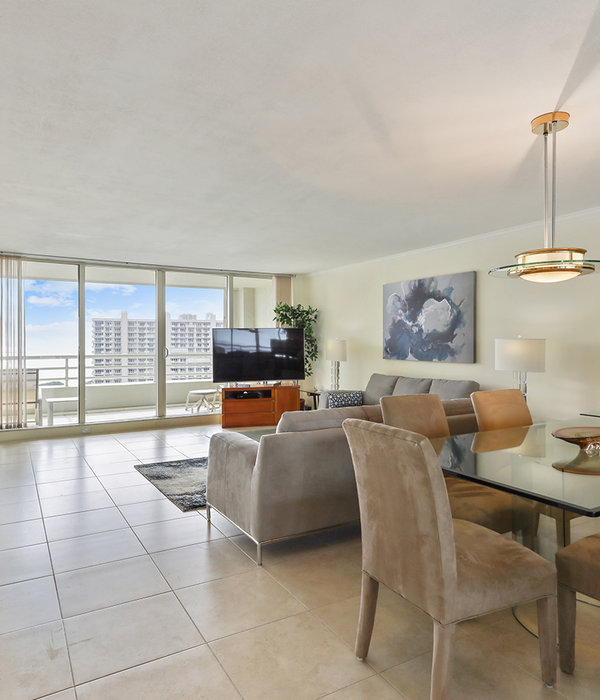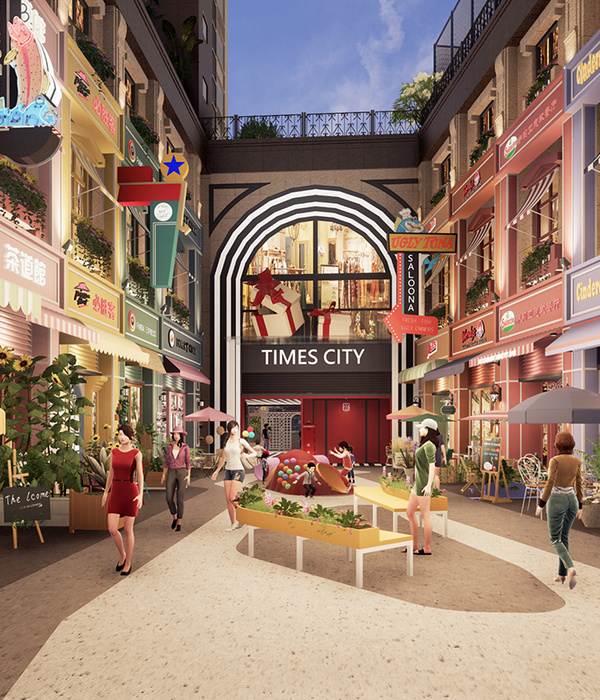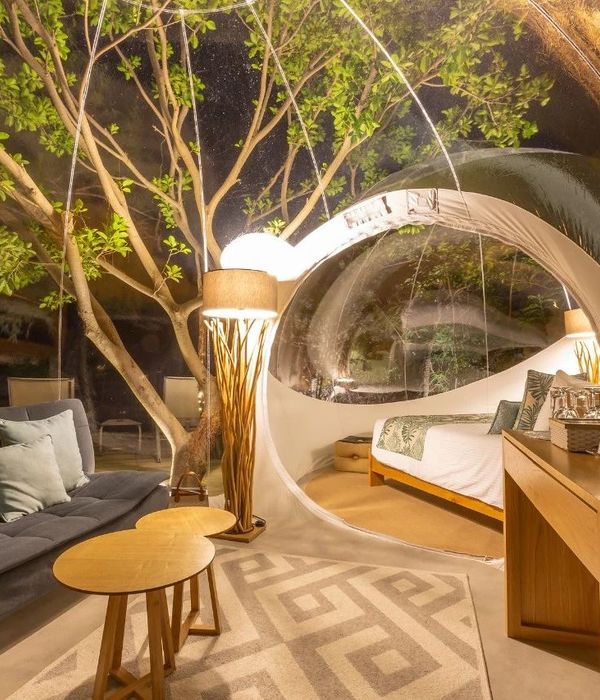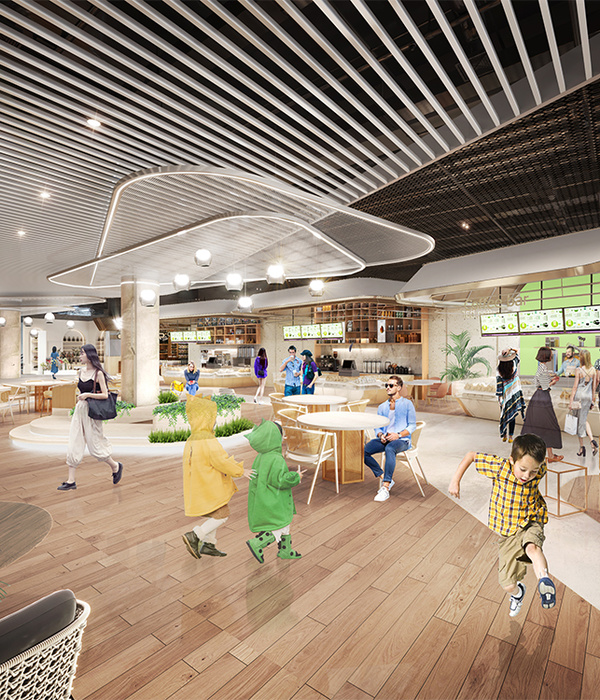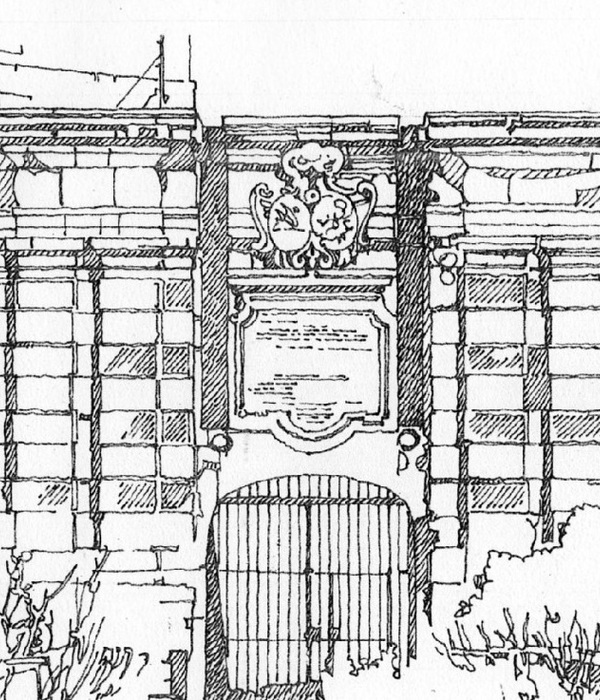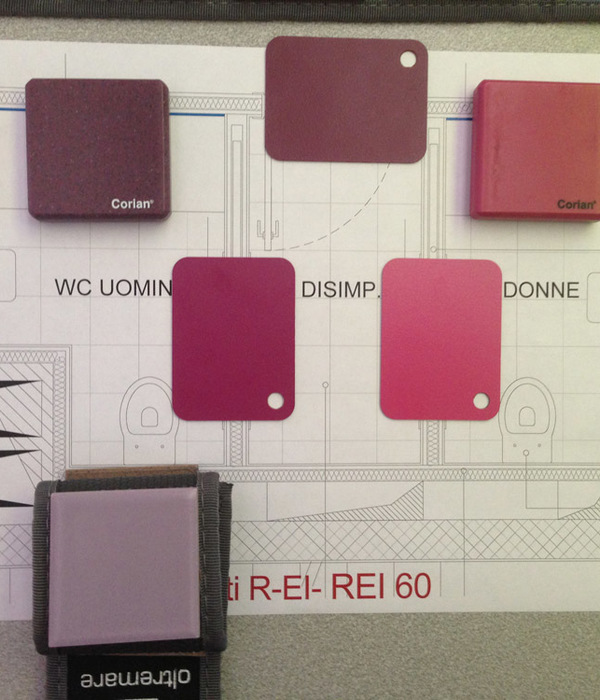LITO零售店,上海 / Storeage
产品及体验不再是让消费者探索自身需求,而是极尽打造匹配不同人群的自适应生态。Storeage携手LITO智能床品牌,通过零售空间设计辅助产品及服务模型打破传统行业模式,为消费者提供更舒适温暖、开放轻松的客制化消费体验。
Products and experiences no longer require consumers to explore their own needs; instead, they focus on creating an adaptive ecosystem that matches different groups of people. Storeage collaborates with LITO, an intelligent bed brand, to break traditional industry models through retail space design, assisting product and service models. This provides consumers with a more comfortable, warm, open, and relaxed customized shopping experience.
▼门头设计,Storefront ©王骁
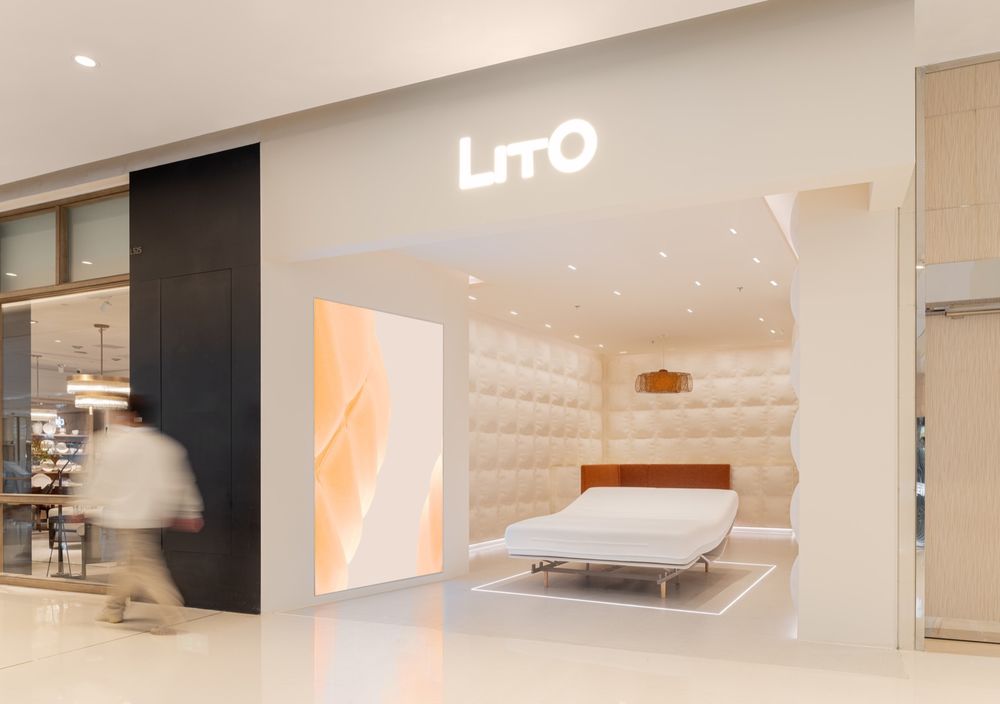
形态创新下柔软与动态的空间艺术
Soft and Dynamic Space Art through Form Innovation
2024年5月新兴智能床品牌LITO发布了首款自适应折叠床,并在上海开设首家品牌店,如何在科技里体现生命力和产品的柔软表达成为空间设计中最关注的话题。
In May 2024, the emerging smart bed brand LITO released its first adaptive folding bed and opened its first brand store in Shanghai. How to express vitality and product softness through technology has become a central topic in space design.
▼折叠床,Folding bed ©Storeage
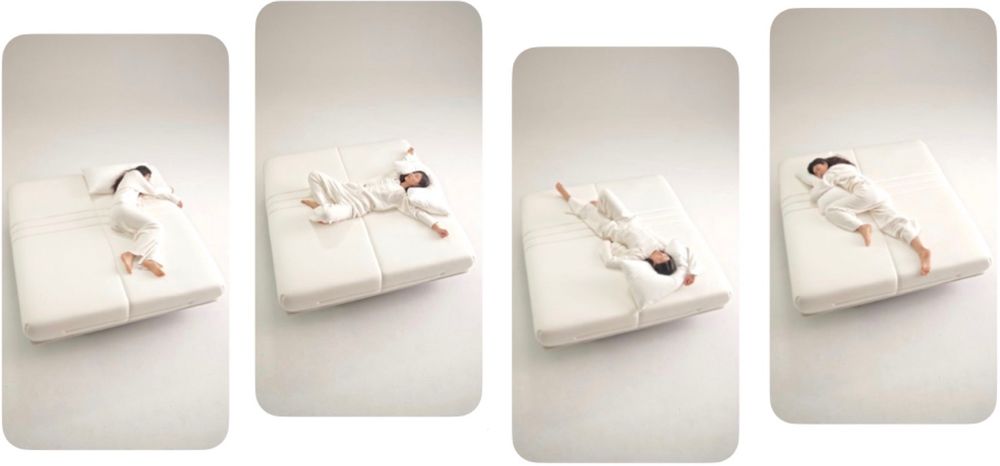
荷兰Storeage零售设计集团为LITO打造的首家门店面积约60平方米,整个空间内不断应用同一组模块 —— 专属LITO空间的视觉符号 “细胞茧”。如何让消费者记住一个品牌,如今有无数的解决办法,制造一个视觉符号仍然是直观有效的方案。
The first store, designed by Storeage Globel for LITO, covers an area of about 60 square meters. The entire space continuously uses the same set of modules—the visual symbol of LITO’s space, “cell cocoon.” Creating a visual symbol remains a direct and effective way to make consumers remember a brand.
▼视觉符号,Visual symbol ©王骁
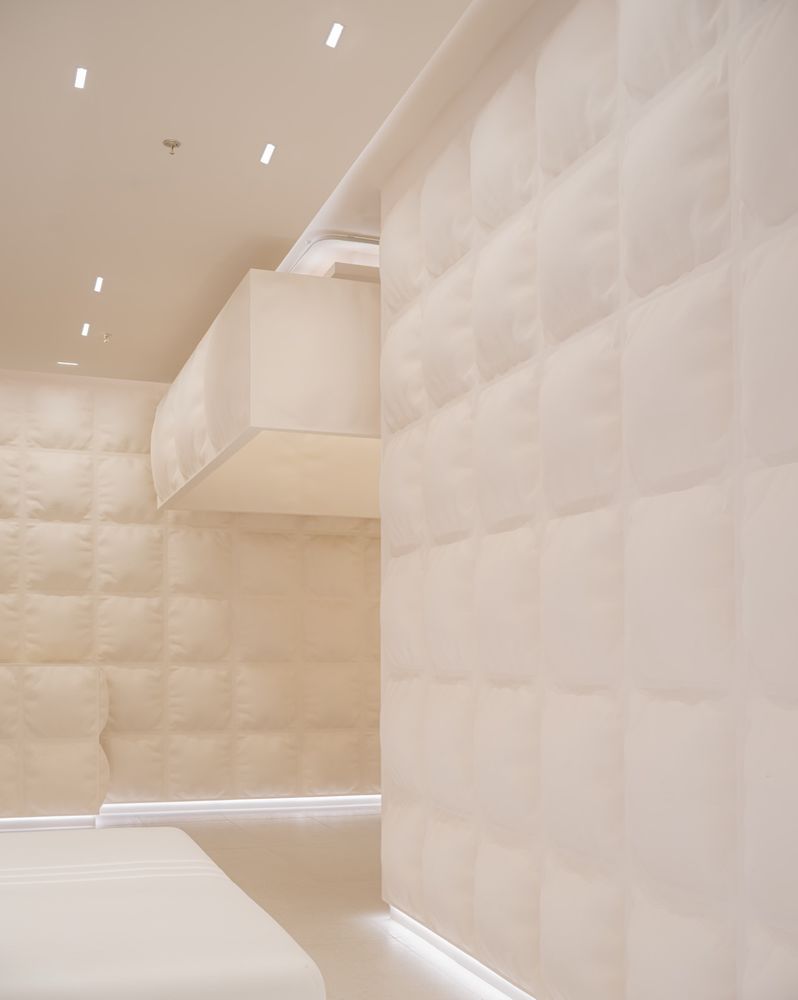
▼特写,Close-up ©王骁

Storeage主创团队通过对材质、形态、产品背后自适应技术的理解,及品牌利用硬核科技为消费者解决柔软需求出发的理念,创新研发玻璃纤维增强水泥材质GRG模拟床垫的柔软凸起模块,用硬性的结构做软性的表达,呼应品牌理念,营造坚实又温柔的氛围。
The main creative team of Storeage, through understanding materials, forms, the adaptive technology behind the products, and the brand’s philosophy of solving soft needs with hardcore technology, innovatively developed fiberglass-reinforced cement (GRG) to simulate the soft raised modules of mattresses. This uses a rigid structure to express softness, echoing the brand concept and creating a solid yet gentle atmosphere.
▼草图,Sketch ©Storeage

作为一家商场店,如何在纷扰的视觉中第一眼抓住消费者视线,同样是商业零售空间重要的考量之一。在有限的空间内,留白足够的空间给予焦点单品,在灯光韵律变化之下,在床架的折叠起伏之间,如呼吸般的舒展、收缩,凸显生命力和科技力。
As a store located in a mall, capturing consumers’ attention at first glance in a visually cluttered environment is also a key consideration for commercial retail spaces. In the limited space, leaving enough blank areas gives focus to key products. Under the rhythmic changes of lighting, among the folds and rises of the bed frame, like breathing, expansion and contraction highlight vitality and technological power.
包裹感应:舒适茧概念的全新体验
Wraparound Sensation: A New Experience of the Comfortable Cocoon Concept
如同品牌传达的,睡眠需要被学习,被适应,被辅助从而帮助身体完成充能,这一产品自适应理念,“细胞茧”在全店的应用极致的表达了主创团队对于舒适的想象。全方位在空间的天花、墙面、吊顶结构中,相同模块的复制矩阵排布,赋予空间巨大怀抱的安全氛围。
▼概览,Overview ©王骁
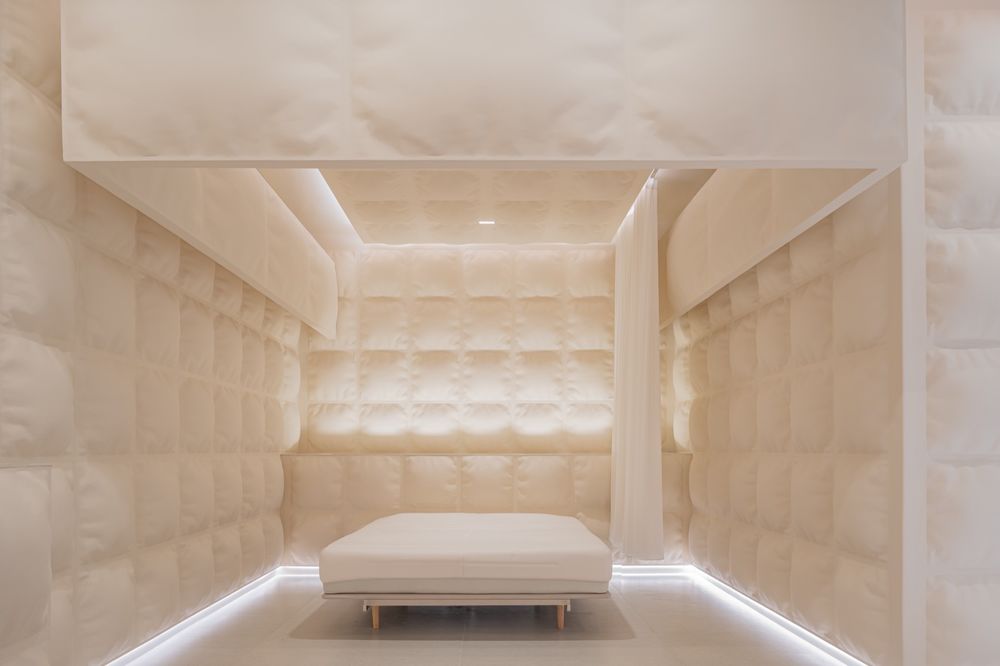
As the brand conveys, sleep needs to be learned, adapted, and assisted to help the body recharge. This adaptive concept of the product is extremely expressed through the “cell cocoon” used throughout the store, embodying the main creative team’s imagination of comfort. The replication matrix arrangement of identical modules on ceilings, walls, and hanging structures in the space gives a vast embrace-like safety atmosphere.
作为LITO产品核心展示自适应算法的压力感应热力图,像素化的展现如何捕捉并学习人体数据,并主动贴合身体曲线均匀分配压力,保证脊柱的自然生理位置。
The core display of LITO products, the adaptive algorithm’s pressure-sensing heat map, shows in a pixelated manner how it captures and learns body data, actively fitting the body’s curves and evenly distributing pressure to ensure the spine’s natural physiological position.
像素化的“细胞茧”模块形式,和热力图拼接般的空间满铺设计,也是主创设计师回敬品牌的小趣味和自适应理念的艺术化具象表达。
The pixelated “cell cocoon” module form and the heat map-like full-space design are also the designers’ playful tribute to the brand and an artistic embodiment of the adaptive concept.
▼局部特写,Partial close-up ©王骁
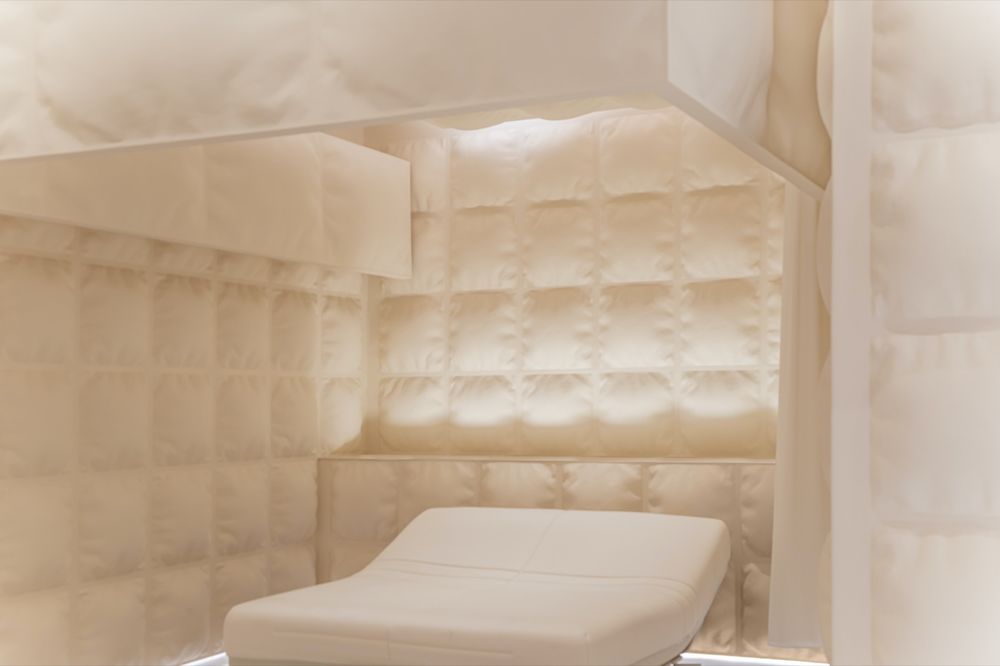
区别于传统床品,智能床的体验更注重沉浸和放松。设计团队尝试不对视觉场景改造,不复刻卧室环境,家居装饰和陈列,在纯净空间内模拟休息时卧室温柔的灯光。放弃除产品焦点灯外所有直射光源,改用隐藏式的天花和踢脚线氛围散射光源打亮整体空间。牺牲了零售空间追求平光的想法,保留了光线折射在不规则的“细胞茧”上的阴影,营造另一种沉浸和神秘。
Unlike traditional bedding, the experience of a smart bed focuses more on immersion and relaxation. The design team avoids modifying the visual scene, not replicating bedroom environments, home decorations, and displays, instead simulating the gentle lighting of a bedroom during rest in a pure space. They forgo all direct light sources except for the product spotlight, using hidden ceiling and skirting board ambient scattered light sources to illuminate the entire space. This sacrifices the flat lighting pursuit of retail spaces, retaining the shadows of light refracted on the irregular “cell cocoon,” creating a different immersion and mystery.
▼材质细部,Detail of the materials ©王骁
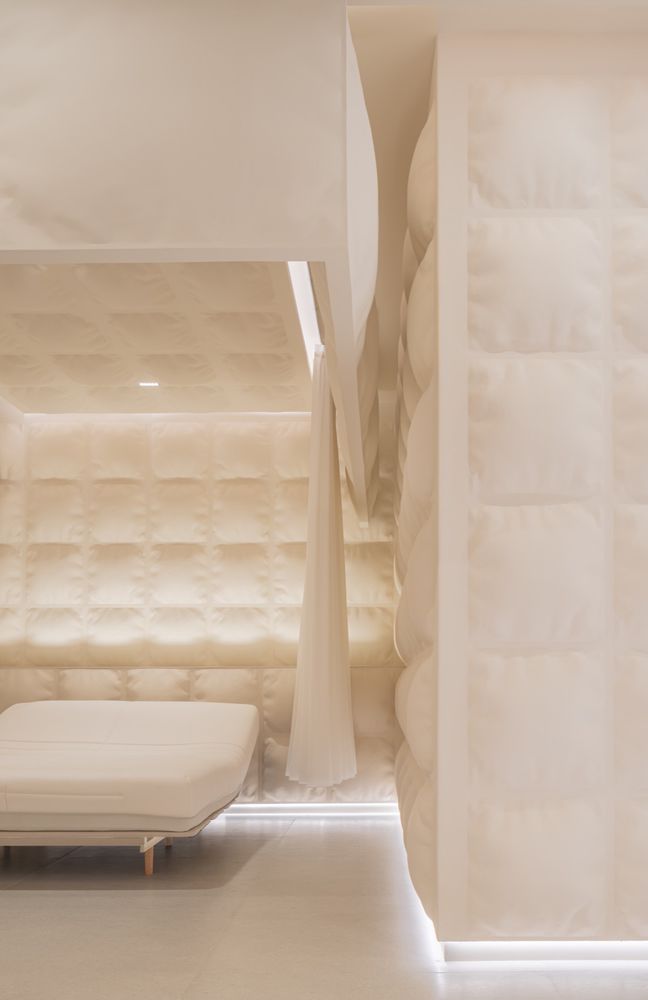
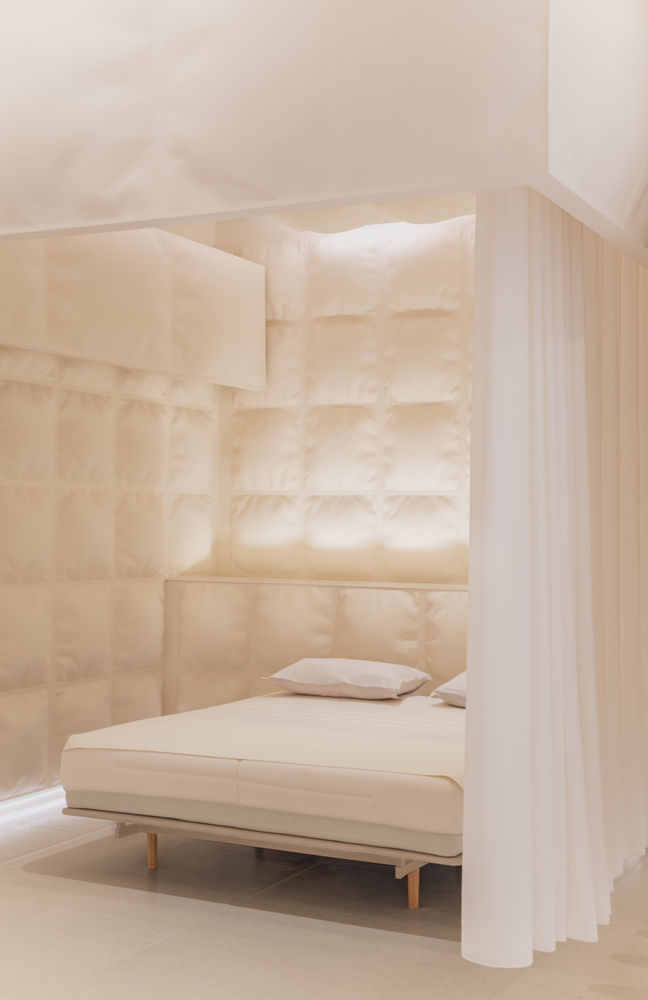
反馈交互:可视化可触化的动态平衡
Interactive Feedback: Visual and Touchable Dynamic Balance
交互在人和人,人和物,人和服务不同维度间进行,充斥着生活和体验的方方面面。人机交互也是LITO搭建产品的重点。线上一键切换不同使用场景折叠床体,适配当前需求;搭载Magic Touch智能操控识别系统,能够通过手掌拍拍,进行床垫折叠功能。
Interaction occurs across different dimensions between people, people and objects, and people and services, permeating all aspects of life and experience. Human-computer interaction is also a focus of LITO’s product construction. With online one-click switching of different usage scenarios for folding bed bodies to fit current needs and the Magic Touch intelligent control recognition system, which allows the bed’s folding function to be controlled by a hand tap.
▼多场景使用,Different usage scenarios ©Storeage
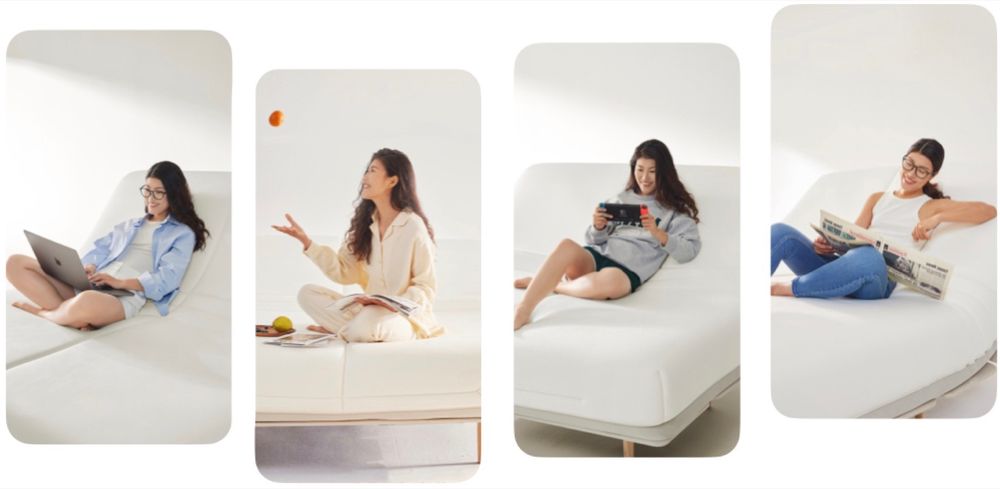
空间作为辅助产品体验的载体,不仅服务于顾客也服务于店员。延续产品“拍拍”的方式,在体验空间模块内,搭载可触控的灯光开关系统。与此同时设计了一整套服务流程,当客户躺下体验时,店员亲轻拍特定模块,关闭直射产品的焦点灯光,并手动拉上帷幔,为顾客完成睡前的关灯关窗帘的仪式,精心设计的服务行为带领消费者进入睡眠体验状态。
The space, as a carrier to assist product experience, serves not only customers but also staff. Continuing the product’s “tap” method, a touch-sensitive lighting switch system is installed within the experiential space modules. Simultaneously, a complete service process is designed: when customers lie down to experience, staff lightly tap specific modules to turn off the spotlight on the product and manually draw the curtains, completing the ritual of turning off lights and curtains before sleep. This carefully designed service action leads consumers into the sleep experience state.
▼舒适的氛围,Cozy atmosphere ©王骁
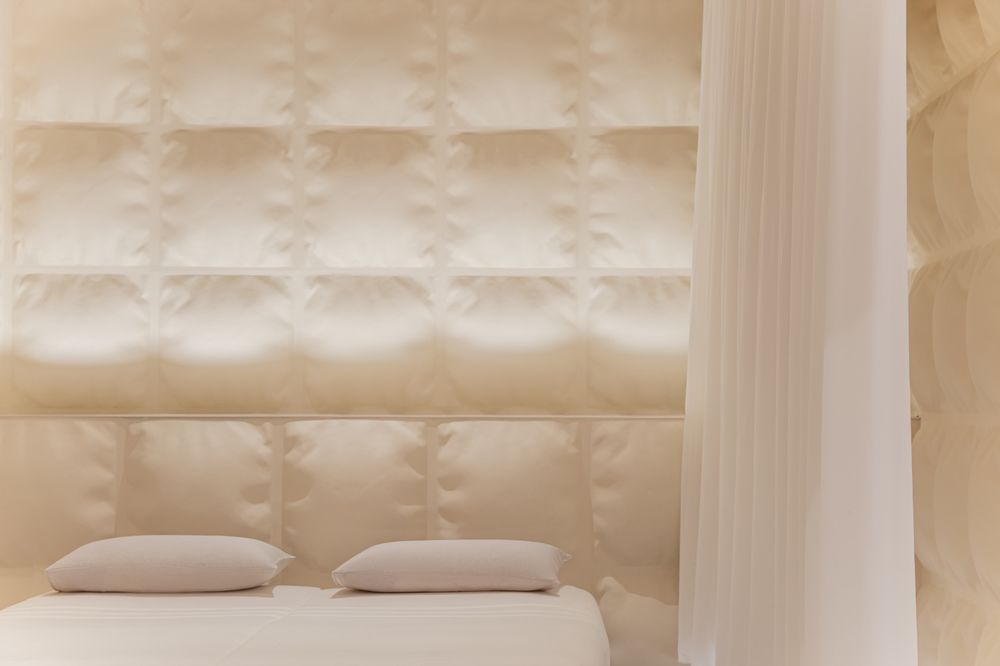
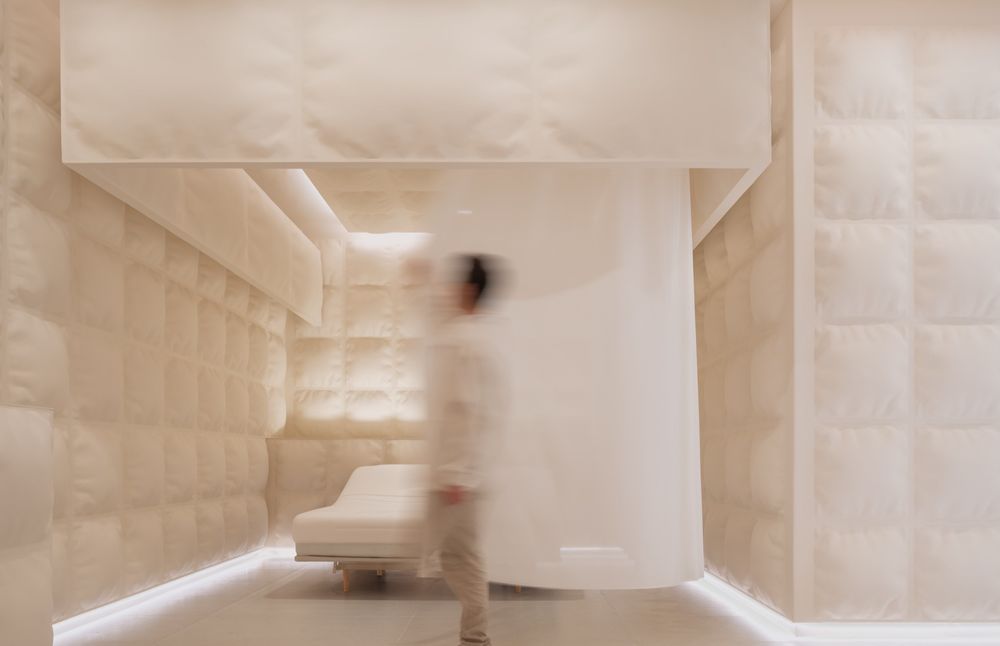
收银区作为传统零售店必不或缺的场景,在这家自适应体验店中被设计团队优化打开,从而打破店员与消费者买单时的身份场景设定。开放的沙发洽谈区,拉近店员与顾客的物理距离,降低买单行为的压迫感,让服务与沟通在舒适的对话中流转。
In this adaptive experience store, the traditional cashier area is optimized and opened up by the design team, breaking the identity scene setup between staff and consumers during checkout. An open sofa negotiation area reduces the physical distance between staff and customers, alleviating the pressure of the purchasing act, allowing service and communication to flow comfortably.
▼精致的搭配,Delicate collocation ©王骁
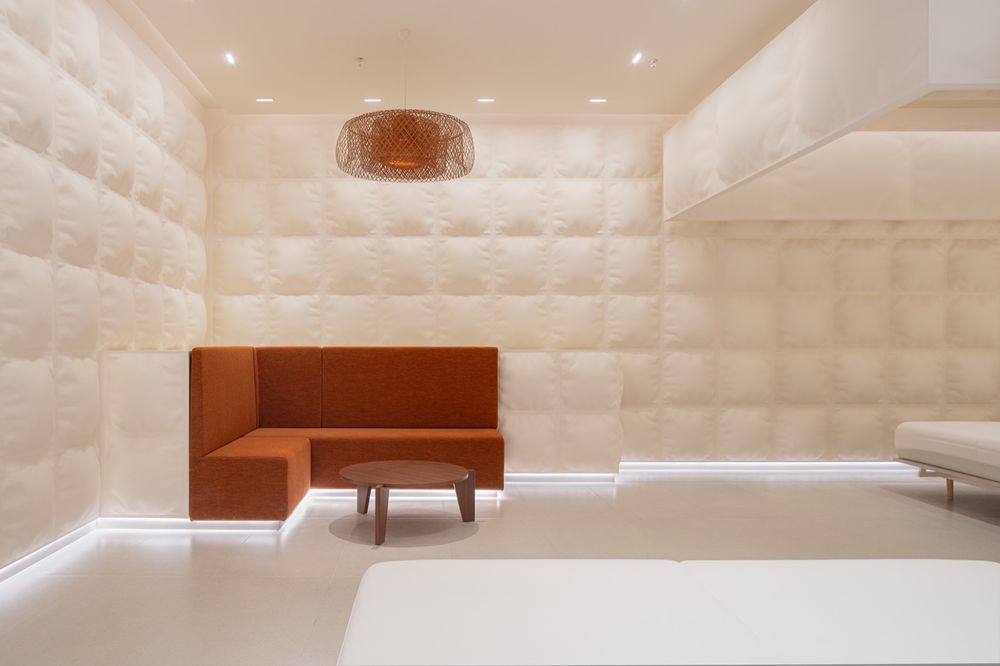
沙发选用暖色调的Gabriel编织面料,搭配竹编非遗手工灯,在细节中体现品质。店内的储存空间也根据运营需求,分布沙发背后的柜体内,适应店员不同场合下的需求。
The sofa is made of warm-toned Gabriel woven fabric, paired with bamboo weaving heritage handmade lamps, reflecting quality in the details. The store’s storage space is also distributed in the cabinets behind the sofa, adapting to the different needs of staff in various scenarios.
▼家具细部,Details of the furniture ©王骁
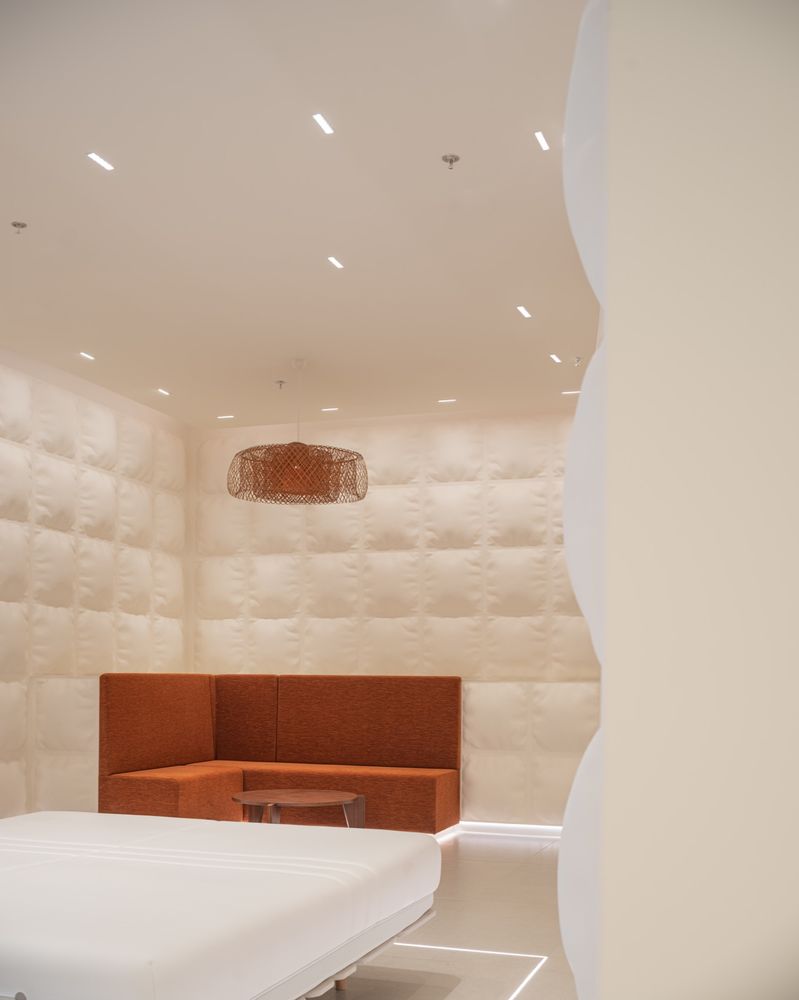
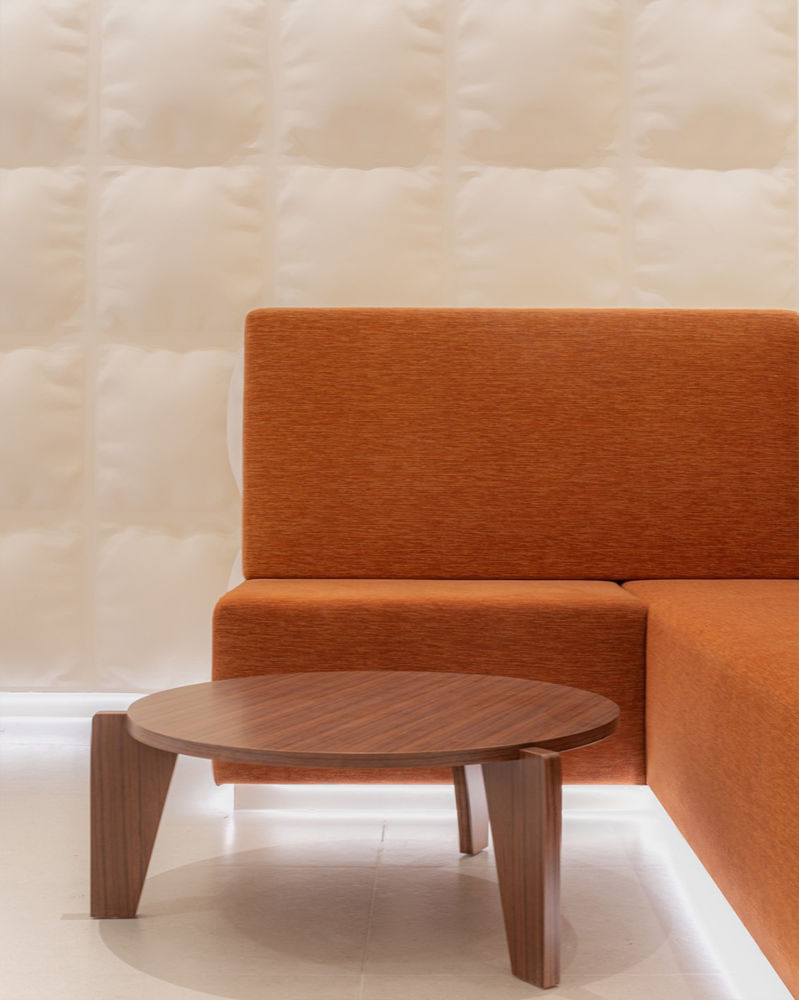
动态循环:从初次见面到不断自我升级完美闭环
Dynamic Cycle: A Perfect Loop from First Meeting to Continuous Self-Upgrade
传统的零售空间,在消费者离店后就结束了品牌与顾客的链接,LITO智能产品的使用特性,离店后线上空间的使用,查看睡眠状况、设置不同使用模式及无线OTA固件升级,延长了消费者与品牌的再链接。
In traditional retail spaces, the connection between the brand and the customer ends once the consumer leaves the store. However, the use characteristics of LITO’s smart products extend the re-link between consumers and the brand in the online space after leaving the store, allowing users to check sleep conditions, set different usage modes, and perform OTA firmware upgrades wirelessly.
▼材质细部,Details of the materials ©王骁
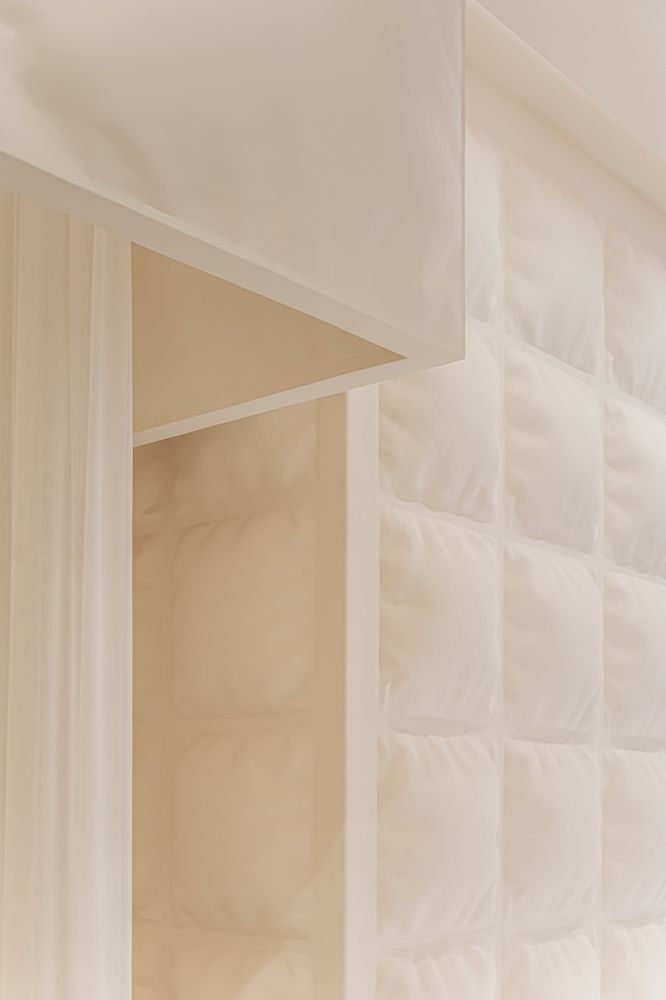
拉新和复购一直是零售中的最佳拍档。Storeage提出升级产品到店培训服务,在每一次固件更新功能时,通过小程序给顾客发送邀请,并安排入口LED及焦点床进行升级功能讲解和展示。在不同运营场景下,LED和焦点床位既是最初吸引消费者入店的视觉锚点,也是提供服务的功能分区。
New customer acquisition and repeat purchases have always been the best partners in retail. Storeage proposes upgrading products to in-store training services, sending invitations to customers via mini-programs for every firmware update function, and arranging LED entrance displays and focus beds to explain and demonstrate the upgraded functions. In different operational scenarios, LEDs and focus bed positions serve as the initial visual anchor points attracting consumers into the store and the functional areas providing services.
▼店面,Storefront ©王骁

LITO品牌创始人Eddy Meng曾表示,智能品牌同样需要柔软和温度,LITO是用硬核的科技为消费者解决柔软的需求,科技同样扎根于自然与人文,LITO不是来自虚无的冰冷代码。Storeage为这一有生命力和质感的科技创造了承载它情感寄托的“舒适茧”空间,正如Storeage亚太区合伙人康力先生所言:“在视觉感官层面之上,在商业零售功用之下,探讨如何在线上与线下场域里不断链接消费者,是每一个品牌和空间都在探索的必然之路。”
Eddy Meng, the founder of the LITO brand, once stated that smart brands also need softness and warmth. LITO uses hardcore technology to solve the soft needs of consumers, with technology rooted in nature and humanity, not cold codes from the void. Storeage has created the “comfortable cocoon” space, a vessel for this emotionally engaging technology, as Storeage’s APAC partner Mr. Kang Li said: “Above the level of visual senses, under the commercial retail function, exploring how to continuously link consumers online and offline is the inevitable path for every brand and space.”
▼“舒适茧”, “Comfortable cocoon” ©王骁
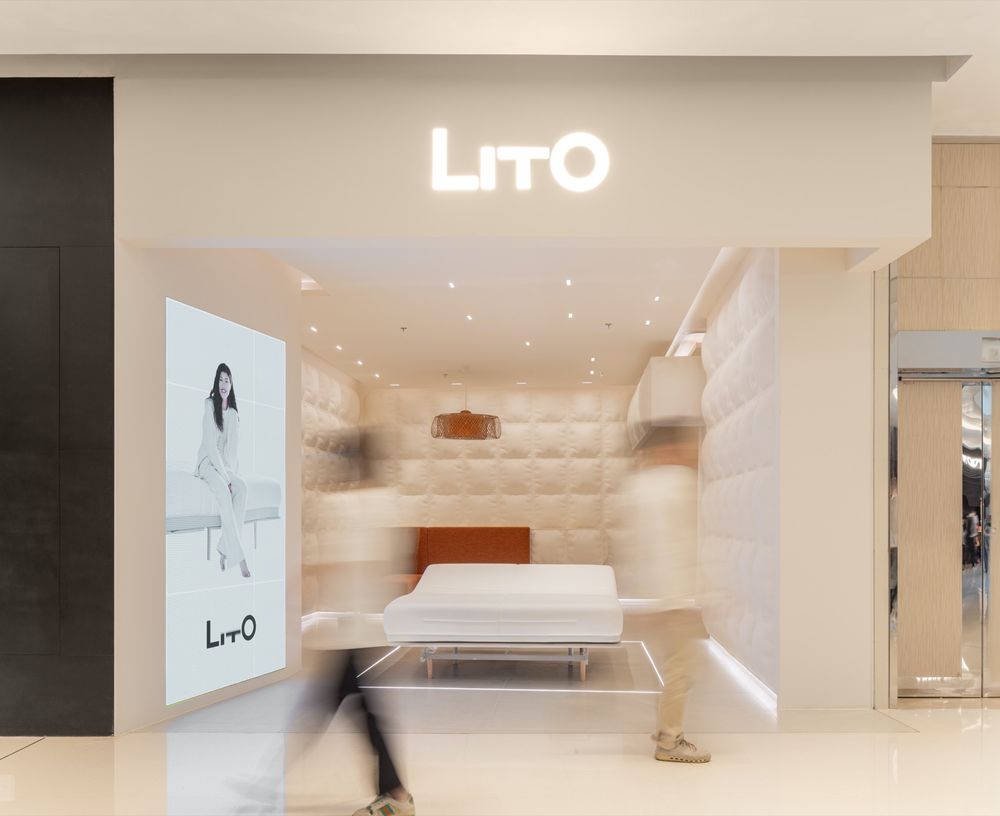
▼平面图,Plan ©Storeage
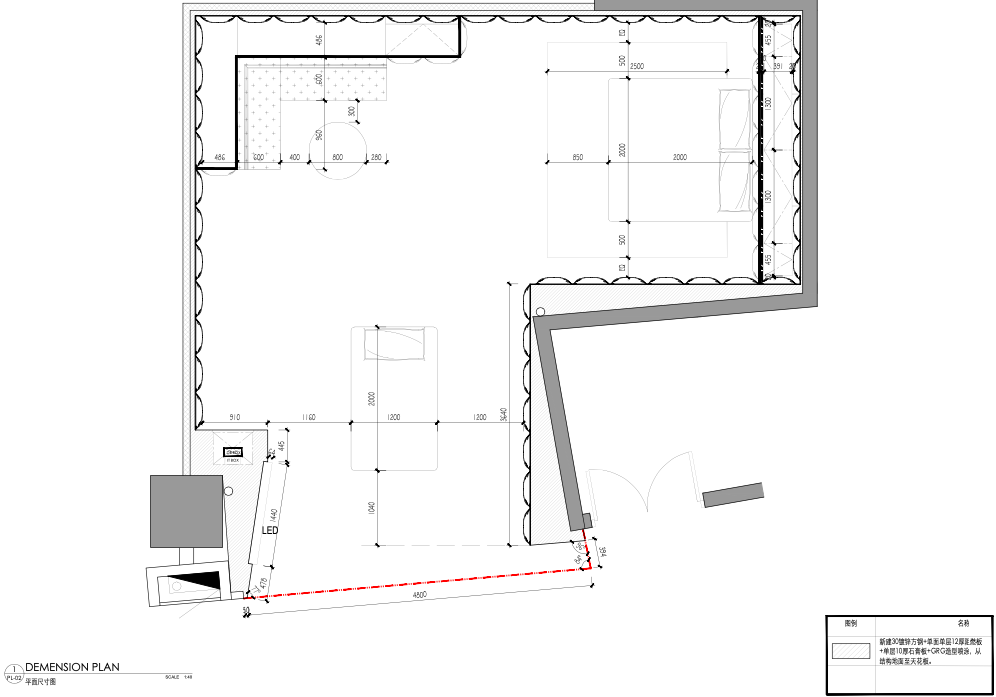
▼天花平面图,Ceiling plan ©Storeage

▼立面图,Elevation ©Storeage
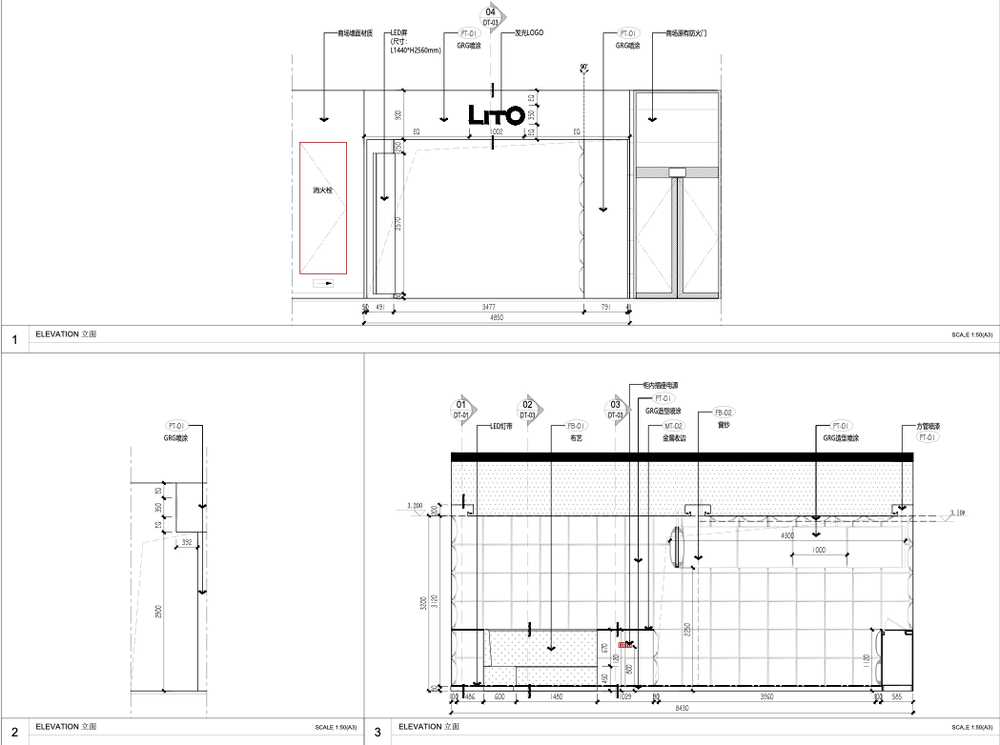
▼细部,Details ©Storeage
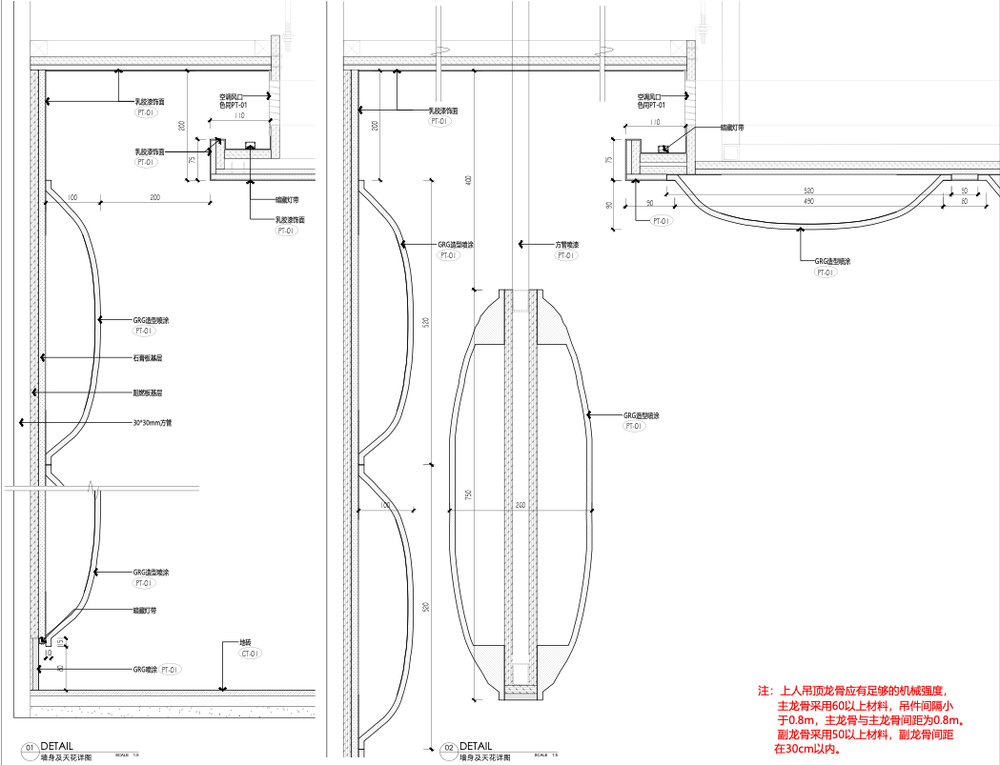
项目名称:LITO
店铺面积:57平方米
地址:上海吴中路万象城
设计公司:荷兰Storeage零售设计集团
创意总监:Sunny Kim
创意指导:康力
项目管理:王慧雯
深化团队:RACE Design and Build
室内落地单位:上海渊锦建筑装饰工程有限公司
摄影师:王骁
Project Name: LITO
Store Area: 57 square meters
Address: Shanghai Wuzhong Road MixC
Design Company: Storeage Group
Creative Director: Sunny Kim
Creative Guide: Kang Li
Project Management: Huiwen Wang
Deepening Team: RACE Design and Build
Interior Implementation: Shanghai Yuanjin Architectural Decoration Engineering Co., Ltd.
Photographer: Xiao Wang





